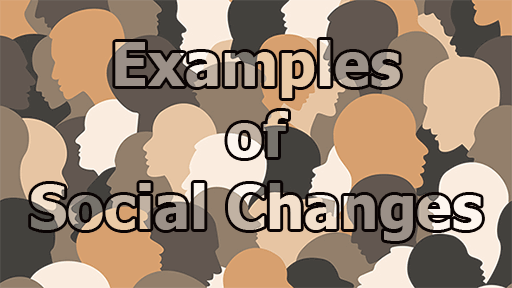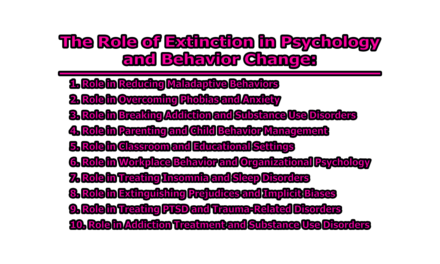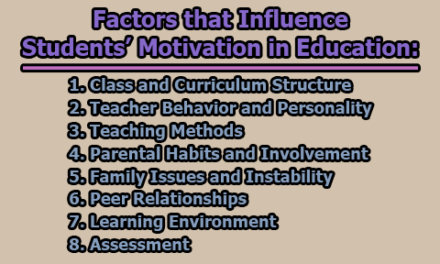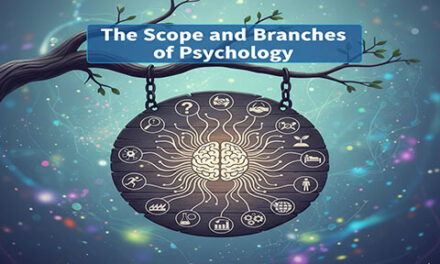Examples of Social Changes:
Social change refers to significant alterations over time in behavior patterns, cultural values, norms, and social institutions. These changes occur due to various factors such as technological advancements, economic shifts, political movements, and cultural transformations. The following sections provide comprehensive examples of social changes that have shaped societies globally.
1. The Civil Rights Movement in the United States:
The Civil Rights Movement in the United States during the 1950s and 1960s aimed to end racial segregation and discrimination against African Americans. This transformative social change was driven by grassroots activism, legal challenges, and legislative efforts. The movement addressed issues such as voting rights, equal access to education, and the desegregation of public spaces.
Key milestones include the Brown v. Board of Education (1954) decision, which declared segregation in public schools unconstitutional. This ruling challenged the long-standing “separate but equal” doctrine and laid the groundwork for future civil rights advancements. The leadership of figures such as Dr. Martin Luther King Jr., who advocated nonviolent resistance, further mobilized public support for the cause.
The passage of the Civil Rights Act of 1964 marked a major victory by prohibiting discrimination based on race, color, religion, sex, or national origin. It ended unequal application of voter registration requirements and racial segregation in schools, workplaces, and public accommodations. Additionally, the Voting Rights Act of 1965 secured African Americans’ right to vote by prohibiting discriminatory practices like literacy tests.
The Civil Rights Movement significantly reshaped American society by promoting racial equality, inspiring future social justice movements, and redefining the legal framework for civil liberties.
2. The Feminist Movement:
The Feminist Movement has brought about profound changes in gender roles and women’s rights worldwide. The movement has evolved through various waves, with the Second Wave Feminism of the 1960s and 1970s being particularly impactful. This period focused on issues such as workplace discrimination, reproductive rights, sexual liberation, and legal inequalities.
Second Wave Feminism sought to address both formal and informal inequalities by challenging patriarchal norms and advocating for women’s autonomy. The publication of Betty Friedan’s “The Feminine Mystique” (1963) is often credited with sparking this wave by highlighting the dissatisfaction of suburban housewives and questioning traditional gender roles.
Legislative changes also played a significant role. The Equal Pay Act of 1963 in the U.S. aimed to reduce gender-based wage disparities by prohibiting wage discrimination for jobs requiring equal skill, effort, and responsibility. The Title IX provision of the Education Amendments of 1972 further advanced gender equality by prohibiting sex-based discrimination in federally funded education programs.
The Feminist Movement influenced cultural perceptions through activism, literature, and media representation. It led to increased participation of women in the workforce, expanded access to higher education, and greater representation in political and leadership roles. The movement’s legacy continues today, addressing contemporary issues such as intersectionality, workplace harassment, and gender-based violence.
The Feminist Movement fundamentally transformed societal attitudes toward gender equality, reshaping legal structures and cultural norms to empower women across various spheres of life.
3. Technological Advancements and the Digital Revolution:
The Digital Revolution has dramatically transformed communication, work, education, and social interactions. Beginning in the late 20th century, the rapid development of digital technologies, particularly the Internet, has revolutionized how information is accessed and shared globally. This technological shift has redefined social relationships, economic activities, and political engagement.
One of the most notable aspects of the Digital Revolution is the rise of social media platforms such as Facebook, Twitter, and Instagram, which have become powerful tools for social activism and political movements. For example, the Arab Spring (2010–2012) demonstrated how digital technology could mobilize mass protests, spread awareness, and challenge authoritarian regimes. Hashtags like #BlackLivesMatter and #MeToo have also emerged as global symbols of social justice and equality, showcasing the role of digital spaces in amplifying marginalized voices.
Moreover, the widespread adoption of smartphones and mobile internet access has made information more accessible than ever. Educational opportunities have expanded through online platforms like Coursera, edX, and Khan Academy, enabling remote learning and bridging educational gaps.
However, the Digital Revolution has also raised concerns about data privacy, cyberbullying, and the digital divide between those with and without reliable internet access. Despite these challenges, technological advancements have fundamentally reshaped how societies function, enhancing connectivity, democratizing information, and creating new opportunities for innovation and collaboration.
4. Environmental Movements and Climate Change Awareness:
In recent decades, environmental movements have emerged as significant drivers of social change, raising awareness about climate change, biodiversity loss, and sustainability. Public concern over environmental issues has grown due to the increasing frequency of natural disasters, rising global temperatures, and scientific reports highlighting the urgent need for action.
One of the most prominent recent movements is Fridays for Future, initiated by Greta Thunberg in 2018. This global youth-led movement has galvanized millions of people to demand stronger climate policies from governments and corporations. Thunberg’s speeches at international forums, such as the United Nations Climate Action Summit, have emphasized the need for immediate and systemic change to combat environmental degradation.
International agreements like the Paris Agreement (2015) represent a collective global effort to address climate change by limiting global warming to below 2°C compared to pre-industrial levels. This accord has influenced national policies, encouraging countries to invest in renewable energy, reduce carbon emissions, and promote sustainable development practices.
Environmental movements have also influenced consumer behavior, leading to increased demand for eco-friendly products, renewable energy sources, and sustainable agricultural practices. Concepts such as the circular economy, zero-waste lifestyle, and green technology have gained popularity as individuals and businesses seek to reduce their ecological footprint.
Additionally, the rise of environmental activism has led to the introduction of green policies in various countries, including carbon taxes, bans on single-use plastics, and investments in clean energy infrastructure. These efforts demonstrate how public awareness and collective action can drive policy changes, shift cultural norms, and promote long-term sustainability.
The growing environmental consciousness signifies a profound shift in societal values, prioritizing sustainability and intergenerational responsibility as key components of future development.
5. LGBTQ+ Rights Movements:
Advancements in LGBTQ+ rights represent a significant social change that has transformed legal systems, cultural perceptions, and social norms worldwide. Historically, LGBTQ+ communities faced widespread discrimination, criminalization, and social marginalization. However, over the past few decades, there has been a growing recognition of LGBTQ+ rights, leading to greater acceptance, legal protections, and societal inclusion.
One of the most notable achievements in this movement is the legalization of same-sex marriage in numerous countries, such as the United States (Obergefell v. Hodges, 2015), Canada (2005), and Germany (2017). These legal victories have redefined family structures, granting same-sex couples equal rights in marriage, adoption, and inheritance.
Pride parades, such as those held annually in cities like New York, London, and São Paulo, have become symbols of visibility and celebration for LGBTQ+ communities. These events play a crucial role in challenging stigmas, promoting acceptance, and fostering a sense of belonging.
Additionally, media representation of LGBTQ+ individuals has improved significantly, with television shows, movies, and literature portraying diverse LGBTQ+ experiences. This increased visibility has contributed to changing cultural attitudes and reducing prejudice.
However, challenges remain, particularly in regions where LGBTQ+ identities are still criminalized or socially stigmatized. Continued advocacy, education, and legal reforms are essential for achieving full equality and protecting LGBTQ+ rights globally.
6. Globalization and Cultural Exchange:
Globalization has accelerated cultural exchanges, reshaping social norms, values, and institutions. It refers to the increasing interconnectedness of societies through trade, communication, technology, and migration. This process has led to the blending of cultures, influencing languages, traditions, and lifestyles worldwide.
One visible effect of globalization is the widespread adoption of global consumer brands, entertainment, and cuisines. For example, international fast-food chains like McDonald’s, streaming services like Netflix, and popular music genres such as K-pop have gained global appeal, reflecting the fusion of diverse cultural elements.
Migration has played a pivotal role in cultural exchange, resulting in multicultural societies where people from different backgrounds coexist. Cities like New York, London, and Toronto are known for their cultural diversity, which enriches social interactions and fosters tolerance.
Moreover, globalization has influenced education, with international student exchanges, global curricula, and language learning becoming more common. Initiatives like Erasmus+ in Europe promote cross-cultural understanding by enabling students to study in different countries.
However, globalization also raises concerns about cultural homogenization, where dominant cultures overshadow local traditions and identities. Efforts to preserve indigenous languages, arts, and customs are essential in maintaining cultural diversity.
Additionally, globalization has influenced social activism by enabling global collaboration on issues such as human rights, climate change, and gender equality. Movements like #MeToo and Black Lives Matter have gained international traction, demonstrating how shared values and causes transcend national boundaries.
Overall, globalization and cultural exchange have fostered greater connectivity, understanding, and cooperation among societies, while also highlighting the importance of preserving cultural heritage in an interconnected world.
7. The Rise of Democracy:
The rise of democracy represents a fundamental social change that has reshaped governance, individual rights, and societal participation. Over the past two centuries, there has been a global shift from monarchies, dictatorships, and colonial rule toward democratic systems that emphasize citizen participation, equality, and human rights.
One of the most influential examples is the fall of the Berlin Wall in 1989, symbolizing the collapse of communist regimes in Eastern Europe and paving the way for democratic reforms. Countries like Poland, Czechoslovakia, and Hungary transitioned to democratic governance, granting citizens the right to vote, freedom of expression, and access to fair judicial systems.
The wave of democratization in Africa during the 1990s also marked significant social change. Nations like South Africa, following the end of apartheid in 1994, established democratic governments focused on reconciliation, equality, and representation. The leadership of Nelson Mandela played a pivotal role in uniting a deeply divided nation, promoting social cohesion through democratic principles.
However, the process of democratization is ongoing and complex. While democracy has expanded globally, challenges such as political corruption, voter suppression, and authoritarian resurgence persist. Nevertheless, the rise of democracy has fundamentally altered power structures, granting citizens greater control over their governments and shaping modern political discourse.
8. The Industrial Revolution:
The Industrial Revolution, which began in 18th-century Britain, represents one of the most transformative periods of social change in human history. It marked the shift from agrarian economies to industrialized societies, leading to profound economic, technological, and social transformations that continue to shape the modern world.
The revolution introduced mechanized production, with innovations such as the steam engine, spinning jenny, and power loom revolutionizing manufacturing processes. These advancements led to mass production, reduced costs, and the growth of industries like textiles, iron, and coal mining.
Urbanization was a significant consequence of the Industrial Revolution, as people migrated from rural areas to cities in search of factory jobs. Cities like Manchester, Birmingham, and Glasgow experienced rapid population growth, resulting in new social dynamics, housing challenges, and public health concerns.
The rise of industrial capitalism also redefined labor relations. While industrialization created job opportunities, it also led to exploitative working conditions, child labor, and income inequality. These issues gave rise to labor unions and social reform movements advocating for workers’ rights, fair wages, and safe working environments.
Additionally, the Industrial Revolution spurred educational reforms, as literacy and technical skills became essential for the industrial workforce. It also influenced political ideologies, including socialism and capitalism, shaping debates about wealth distribution, state intervention, and individual rights.
Despite its many benefits, the Industrial Revolution had negative environmental impacts, including pollution and resource depletion. These challenges continue to influence contemporary discussions on sustainable development and industrial practices.
Consequently, the Industrial Revolution redefined economic structures, social classes, and living conditions, laying the groundwork for modern industrial societies and influencing global development trajectories.
9. Educational Reforms and Access to Education:
Educational reforms and improved access to education have played a transformative role in reshaping societies by promoting equality, economic growth, and social mobility. Historically, access to education was limited by factors such as gender, race, socio-economic status, and geographical location. Over time, reforms have expanded educational opportunities, fostering more inclusive and progressive societies.
One significant example is the establishment of universal primary education, a global goal championed by organizations such as UNESCO and UNICEF. Countries like Finland have set international standards for accessible, high-quality education, focusing on equal opportunities for all students regardless of background. Finland’s education system, which emphasizes equity, free education, and highly trained teachers, has been credited with producing some of the best academic results worldwide.
Reforms like the Right to Education Act (2009) in India made education a fundamental right for children aged 6–14, significantly increasing literacy rates and school enrollment. Similar policies in various nations have narrowed the educational gap and empowered marginalized communities.
Additionally, the rise of digital education platforms such as Khan Academy, Coursera, and edX has revolutionized access to knowledge. These platforms provide affordable and flexible learning opportunities, breaking down traditional barriers to higher education and skill development.
Educational reforms have also included curricular changes emphasizing critical thinking, creativity, and digital literacy to prepare students for modern challenges. However, disparities in educational access persist, especially in regions affected by poverty, conflict, and inadequate infrastructure. Ongoing efforts are essential to ensure that educational reforms contribute to sustainable and inclusive social development.
10. Health Crises and Social Behavior Changes:
Health crises have historically acted as catalysts for profound social behavior changes, reshaping public health policies, interpersonal interactions, and societal norms. Events such as pandemics and widespread health emergencies highlight the interconnectedness of global health and social behavior.
The COVID-19 pandemic (2020) serves as a recent and significant example. It dramatically altered daily life, influencing work habits, healthcare delivery, and social interactions. Remote work, once a niche practice, became mainstream, with companies like Twitter and Facebook allowing employees to work from home permanently. This shift redefined work-life balance, urban development, and transportation needs.
Social distancing, mask-wearing, and heightened hygiene practices became global norms, influencing how people interact in public spaces. The pandemic also accelerated the adoption of telemedicine, allowing healthcare services to reach patients remotely, thus transforming the healthcare industry and patient care practices.
Beyond immediate health measures, COVID-19 highlighted the importance of mental health, with increased awareness and conversations around psychological well-being. Governments and organizations have since prioritized mental health services, recognizing their role in societal resilience and productivity.
Historical health crises, such as the HIV/AIDS epidemic, also led to long-lasting social changes, including increased advocacy for public health education, destigmatization of diseases, and advancements in medical research. The HIV/AIDS crisis mobilized global cooperation for healthcare access and human rights, particularly for marginalized communities.
Health crises often expose social inequalities, as seen with COVID-19’s disproportionate impact on low-income and minority populations. In response, there is a growing focus on addressing these disparities through more equitable healthcare policies and infrastructure improvements.
Subsequently, health crises not only reshape healthcare systems but also influence broader social behaviors, emphasizing collective responsibility, adaptability, and the need for inclusive health strategies in building resilient societies.
It is apparent that social changes are continuous processes influenced by political movements, technological innovations, cultural shifts, and global interactions. The examples talk over—the Civil Rights Movement, Feminist Movement, Digital Revolution, Environmental Movements, LGBTQ+ Rights Movements, Globalization, MeToo Movement, Urbanization, Educational Reforms, and Health Crises—highlight the dynamic nature of societies. Understanding these changes helps comprehend the evolving human experience and prepares societies for future transformations.
References:
- Appadurai, A. (1996). Modernity at Large: Cultural Dimensions of Globalization. University of Minnesota Press.
- Castells, M. (2000). The Rise of the Network Society. Wiley-Blackwell.
- Eskridge, W. N. (2017). Gay Marriage: For Better or for Worse? Oxford University Press.
- Evans, S. (2015). Tidal Wave: How Women Changed America at Century’s End. Free Press.
- Faderman, L. (2015). The Gay Revolution: The Story of the Struggle. Simon & Schuster.
- Freeman, J. (1975). The Politics of Women’s Liberation. Longman.
- Howard, P. N., & Hussain, M. M. (2011). The Role of Digital Media. Journal of Democracy, 22(3), 35-48. https://doi.org/10.1353/jod.2011.0041
- Klarman, M. J. (2004). From Jim Crow to Civil Rights: The Supreme Court and the Struggle for Racial Equality. Oxford University Press.
- McAdam, D. (1982). Political Process and the Development of Black Insurgency, 1930-1970. University of Chicago Press.
- Robertson, R. (1992). Globalization: Social Theory and Global Culture. Sage Publications.
- Thunberg, G. (2019). No One Is Too Small to Make a Difference. Penguin Books.
- United Nations Framework Convention on Climate Change (UNFCCC). (2015). The Paris Agreement.

Library Lecturer at Nurul Amin Degree College










